Gap Between Fireplace and Wall – How to Fix It?
Even if a fireplace is well-built, the minute structural fluctuations from weather variance, along with the drastic changes in temperature and humidity levels, can result in the fireplace separating from wall. Although you might be ... Read more The post Gap Between Fireplace and Wall – How to Fix It? appeared first on Arthitectural.
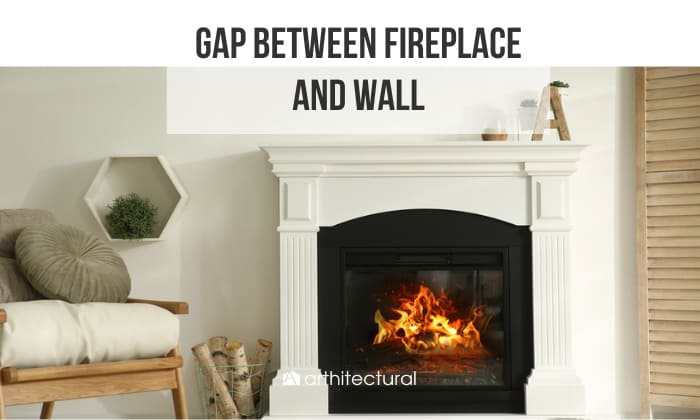

Even if a fireplace is well-built, the minute structural fluctuations from weather variance, along with the drastic changes in temperature and humidity levels, can result in the fireplace separating from wall.
Although you might be tempted to leave the gap as it is, it’s best to fix the problem to prevent drafts. After all, it’s not that hard to fill in the gap between fireplace and wall—all you need is caulk, expanding foam, or felt.
Materials You Can Use to Fill a Gap
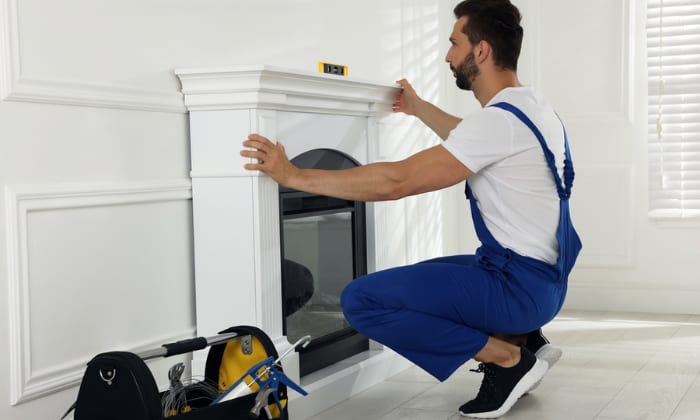
Knowing what materials you can use to fill gaps in drywall and their characteristics will help you choose one that best suits your needs. Below are the top common options.
1. Caulk
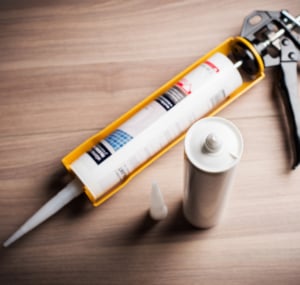
Right off the bat, caulk is favored due to many reasons: it’s available everywhere at an affordable price, easy to apply, available in many colors, water-resistant, and can tackle almost any gap smaller than 0.25 inch (or 0.5 inch with a backer rod).
However, caulk exudes a strong odor initially, aside from the fact that it’s prone to cracking from UV exposure or shrinking as time passes.
2. Expanding foam
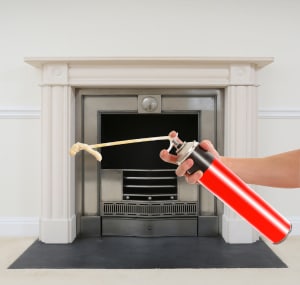
For gaps larger than 0.25 inch, expanding foam would be a better choice, as it can handle anything up to 3 inches. And as it comes with an applicator nozzle, you can easily fill hard-to-reach areas, although you’ll need some practice to avoid applying too much foam.
Another advantage of expanding foam is that it’s pretty long-lasting, and some products can be fire-resistant or waterproof.
3. Felt
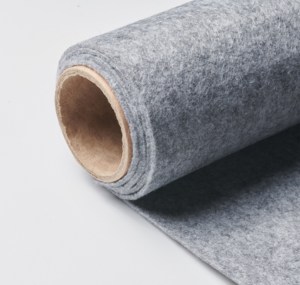
Another ideal seal around fireplace insert is felt, which has the distinct advantage of being fixed in size and affordable.
However, as felt is sold in the form of strips, it may not be able to fill in awkwardly shaped gaps. Its lifespan isn’t really long either—around 1 to 2 years at most.
How to Fix the Gap Between the Fireplace and the Wall?
No matter what you use to fill in the gap in the sheetrock fireplace, you must always clean the affected area with a vacuum, followed by a wet towel. From there, the process diverges a bit.
1. Using caulk
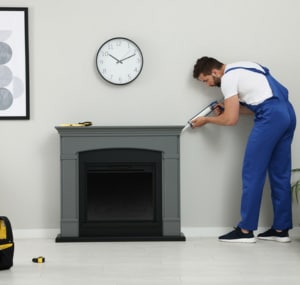
- Apply painter’s tape to any area you want to leave untouched.
- Cut the caulk tube’s nozzle at a 45-degree slant. For more precision, insert it into a caulk gun.
- Slide the slanted tip into the gap between fireplace insert and surround and gently press the gun’s trigger.
- Move the caulk tube along the gap and keep the pressure on the trigger steady as you go. Try not to stop halfway.
- Scrape off the excess fireplace caulk while it’s still wet with a putty knife.
- Once you deem the job done, pull off the painter’s tape immediately.
2. Using expanding foam
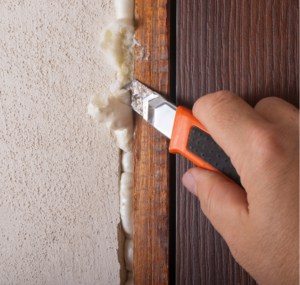
- Put on a disposable mask and gloves.
- Put out the fireplace if it’s on. In this case, you should wait for it to cool completely.
- Make sure there is no wiring that will get in the way.
- Spray the affected area with clean water until damp.
- With its applicator nozzle on, shake the can for a few seconds.
- Apply the foam into the gap from the bottom up, preferably with the can in an upside-down position.
- As the material can expand to 30-300 times its size, use it sparingly.
- Leave the material to dry, after which you can cut the extra foam with a knife and sand it until smooth.
3. Using felt
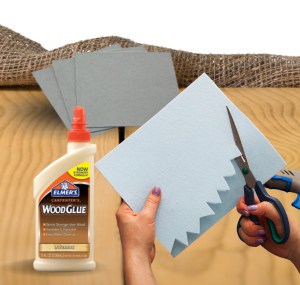
- Cut the felt into smaller pieces and make sure they fit in the gap.
- Dip the felt pieces into wood glue.
- Wedge the soaked felt strips into the gap.
- Let them dry.
- If there are any pieces sticking out, you can cut off the excess with a pair of scissors.
Challenges of Filling in the Gap Between Fireplace and Wall
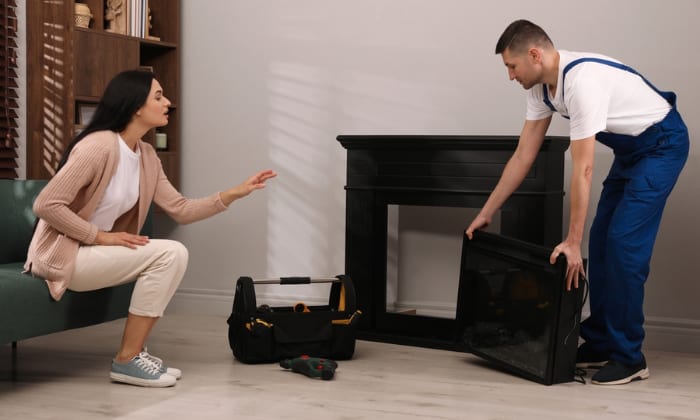
When trying out various fixing fireplace gap ideas, be sure to keep the following in mind:
- There’s a chance you’ll seal up a gap that is actually the original design’s intent, so make sure it’s a recent occurrence. Otherwise, you may end up damaging its airflow or over-insulating the fireplace.
If unsure, you can call a fireplace inspector, although this will cost you $100 or more.
- Never seal gaps around fireplace doors with materials that you don’t know well. There’s a chance that they can quickly catch fire, which clearly poses a safety hazard within your home.
So, for instance, when buying caulk for fireplace filler panels, you must check whether it’s flammable—this is usually the case for solvent-based caulk. Rest assured that other types are typically non-combustible.
- The gap may not be a straight line, and the surfaces on either side of the gap may not be level. This can make it difficult to create a tight and uniform seal.
What Are the Benefits of Filling the Gap?
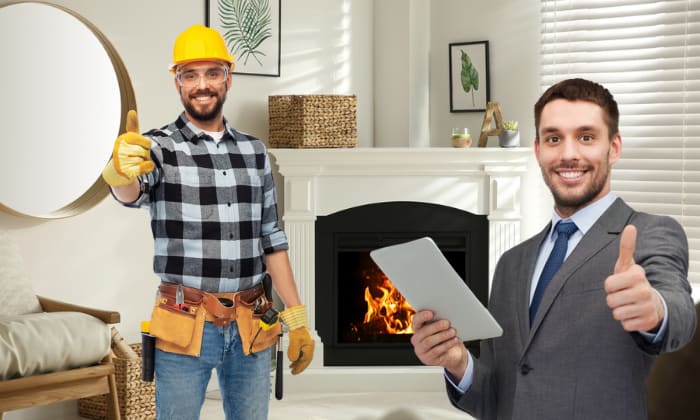
When the gap between the fireplace and the wall is not an intentional feature for the sake of ensuring structural integrity, sealing it will help you solve several problems:
- As mentioned above, the gap can result in draft between fireplace and wall. So filling it will improve the energy efficiency of your home, which can reduce your energy bills in turn.
- If embers in the fireplace escape through the gap, they may ignite nearby flammable materials (such as wood studs in the walls), thereby posing a serious fire hazard.
- A gap between a fireplace and a wall can seem unsightly and create an unfinished look in a room. By filling it, you’ll improve the appearance of your fireplace and make your room look more put together.
- If not filled immediately, the gap can get out of hand—meaning you can no longer tackle the issue yourself and will need to call in a professional.
Tips to Maintain Fireplace and Wall
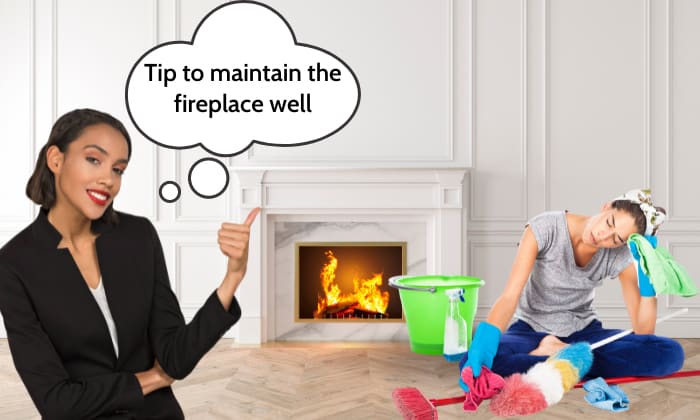
To prevent issues such as an ever-increasing gap from happening, you should take preventative measures by maintaining the fireplace well. Below are a few pointers:
- Don’t forget to clean your fireplace on a regular basis to prevent the buildup of soot, debris, ash, etc.
Use a brush, followed by an ash vacuum, to remove the soot buildup from the firebox and surrounding areas. Then, use a sponge dipped in soapy water to wipe down the walls before finishing the job with a clean, damp cloth.
- Make it a habit to occasionally inspect your fireplace. This includes ensuring there are no smoke stains in the hearth’s ceiling, the firebox has no cracks/gaps, and the chimney is still working.
- Learn how to use your fireplace properly to avoid damage to the wall or other surrounding materials.
For instance, you should only burn seasoned wood. Never put in greenwood, household trash, or accelerants such as gasoline, which can cause a dangerous flare-up. Moreover, keep the fire small and manageable and never leave it unattended.
Conclusion
The gap between fireplace and wall can present several issues, such as the safety, energy efficiency, and even the aesthetics of your home. So, try to resolve it as soon as possible before more serious problems rear their ugly heads.
By taking the necessary steps to fill the gap and maintain the fireplace and wall, you’ll be able to enjoy a cozy, safe, and efficient fireplace for many years to come.
The post Gap Between Fireplace and Wall – How to Fix It? appeared first on Arthitectural.
